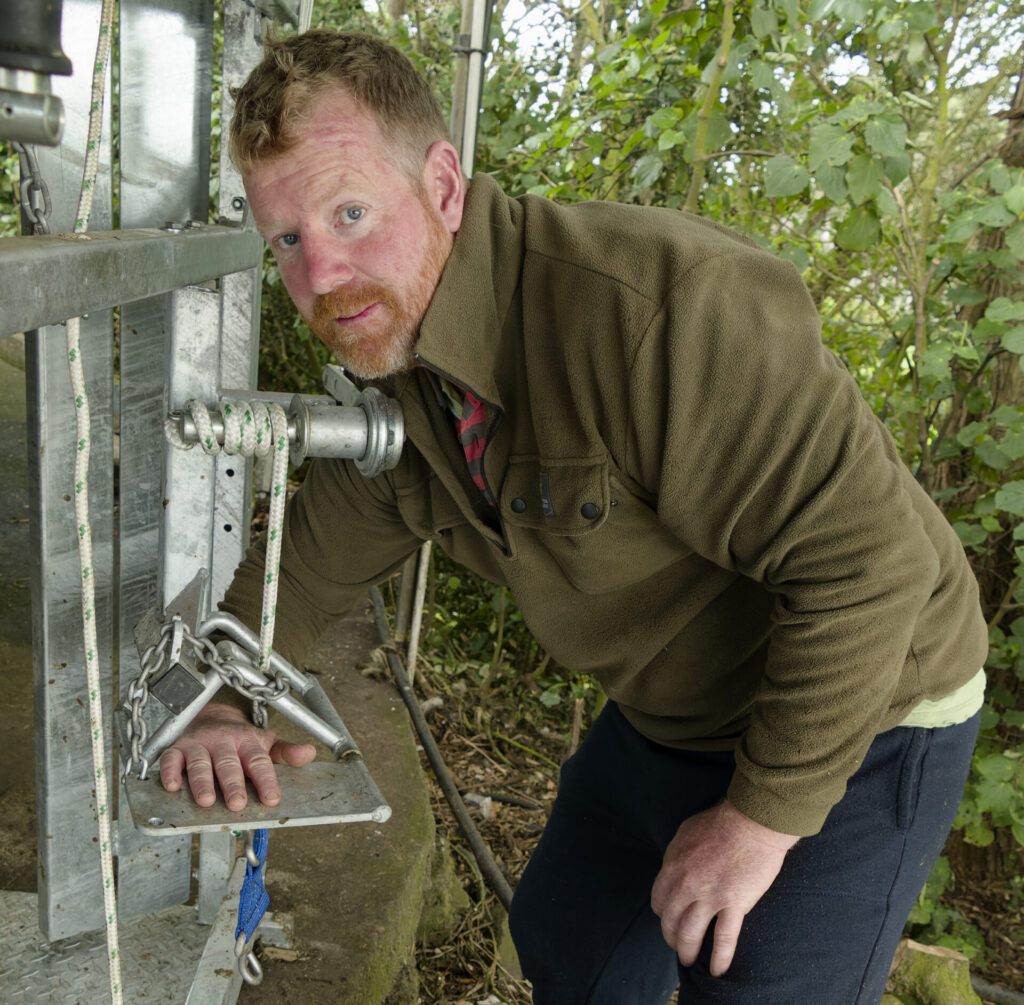Performing hoof work on lame cows is never a favourite farm task, and anything that can be done to simplify the process and make it safer for the cow and the farmer can only be beneficial.
Over two years ago, Pīhama farmers Kieran and Claire Bourke decided they needed new hoof-trimming chutes for their two farms.
Their contract milker milks 700 cows on their 270ha Manaia farm, Kaupok, and 500 cows on the family’s 115ha Pīhama homestead farm, Bourke Clonlara.
The farm is named after the Irish village in County Clare from which Kieran’s great-great-grandfather emigrated to New Zealand.
Their herds are predominately Holstein, but they’re also Jersey and Ayrshire breeders and have 30-40 cows of each breed.
Looking to find those chutes, the Bourkes visited the New Zealand National Fieldays with that in mind. They viewed a number of different brands before returning to the Ekochute site.
They felt that the heavily built, Irish-manufactured chutes had features that set them apart from other brands.
These include the fully opening, self-catching front gate, two 16cm-wide belly bands, ergonomic front leg support and a back leg system that leaves the foot in a perfect trimming position.
“We ended up ordering two chutes; one for each farm, But then covid-19 occurred, the ships stopped arriving, and the New Zealand importer stopped importing them,” Kieran says.
Two years later they had planned a family holiday to Europe, so contacted the Ekochute factory and told them that they would visit them when they were in Ireland. The factory was only an hour away from one of the families they were staying with.
“When we were talking to the factory owner in Ireland I said, ‘I tell you what; we’ll come over in early January and see you.’ The phone immediately went silent. He didn’t know that we were going over there anyway,” Kieran joked.
They visited the factory, bought two pre-made Ekochute Manual chutes and shipped back another three broken-down chutes packed around the assembled chutes to sell in New Zealand.
“The chutes are built by an Irish hoof trimmer who has visited many farms and experienced many types of chutes. So they’re built from a hoof trimmer’s perspective,” Kieran says.
“The support pillars are placed much further back than other chutes, which gives the cow’s rear legs more support. It’s those little things that that show they’re designed by a hoof trimmer with practical experience.”

A fully enclosed base stops the cow’s feet from sliding out and prevents the cow injuring herself or the farmer, and helps keep the cow calm.
The two belly straps are winched up underneath the cow. If a cow is held securely she becomes more comfortable and there’s less chance of her flailing about.
“The auto-shutting head bail was a big thing for us. As the cow walks through the chute her shoulders push the gate forward and closes it into a locked position. There’s no need to pull on a rope at the front to do it, which makes it easy and speeds up the process,” Kieran says.
“The front hoof supports act like a chute. It has a winch and plate system that rolls underneath the leg and holds it securely so the cow can’t move while you’re working on it. Usually, you have to manually pick up the cow’s foot and strap it to a block.”
The Bourke’s old system required the use of a leg rope, a potentially dangerous operation.
Recently this has become even more concerning due to the difficulty of finding experienced staff as it is a potential safety hazard for the inexperienced. It’s also harder to attract good staff if a farm has poor facilities.
He said the farms’ contract milker “has worked with many chute models. His output and enjoyment through this machine is outstanding. He likes its user-friendliness and operating speed. He recently did all four feet of eight cows in an hour,” Kieran says.
“Our shed manager does most of this farm’s milkings and hoof work, and loves the chute because it’s so user friendly.”
Very few farmers enjoy doing cow hoof work, but an efficient, high-quality facility makes it far more enjoyable. Hooves that can move freely and steel pipes aren’t a good combination for fragile human hands.
A farmer is far more inclined to get in close and get the job done quickly when they know that they’re not at risk of being kicked and potentially getting injured.
“We used to do the hooves in the exit race, but we’ve put the new chute inside the cowshed so we can do feet undercover during milking,” Kieran says.
“If we see a lame cow, we draft her out and I spend five minutes doing her feet straight away, and then let her go down the exit race. With the other chute we had to wait until after milking to do the job.”
This article first appeared in the December edition of our sister publication, Dairy Farmer.










